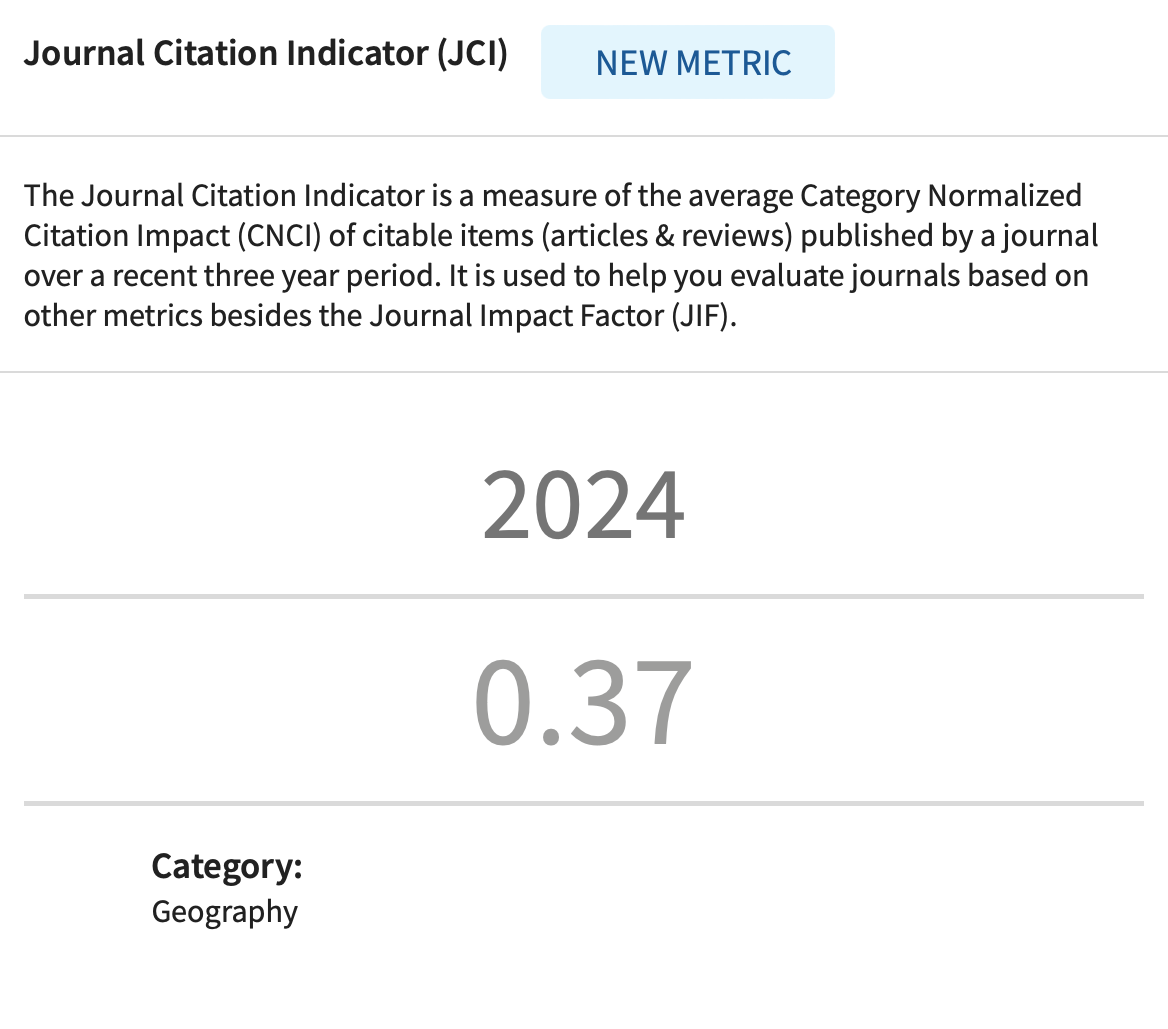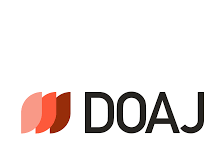E-WOM AND HERITAGE TOURISM IMAGE FORMATION: YOUNG TOURISTS’ PERCEPTIONS OF BANGLADESHI WORLD HERITAGE SITES
DOI:
https://doi.org/10.2298/IJGI241206011AKeywords:
destination image formation, e-WOM, world heritage sites, travel intention, Goal-Directed Behavior ModelAbstract
This study examines the implications and formation of a heritage destination image through e-WOM (Electronic Word-оf-Mouth) among young Bangladeshi visitors, with a specific emphasis on UNESCO World Heritage Sites. The research adopts a quantitative methodology. This study is based on the Goal-Directed Behavior Model (GDBM) by collecting data from 400 respondents. Partial Least Squares Structural Equation Modeling (PLS-SEM) was utilized to examine the hypothesized relationships among the constructs. The model exhibited high predictive validity, and e-WOM significantly influenced cognitive image (β = .552), affective image (β = .493), and desire (β = .615). The heritage image and travel intention were also revealed as major mediators of tourist behavior for young Bangladeshi visitors to the World Heritage Sites. The results indicate that e-WOM significantly enhances both cognitive and affective perceptions of a destination, thereby strengthening its perceived heritage image. Psychological constructs such as emotion, attitude, and desire influence the connections between e-WOM and the desire to travel. The study extends the GDBM to incorporate e-WOMs and heritage images, and thus contributes to the existing literature. The insights offer pragmatic suggestions for location managers and marketers to entice tech-savvy young tourists by employing techniques that highlight positive online evaluations and emotional interaction.
Article metrics
References
Abubakar, A. M., & Ilkan, M. (2016). Impact of online WOM on destination trust and intention to travel: A medical tourism perspective. Journal of Destination Marketing & Management, 5(3), 192–201. https://doi.org/10.1016/j.jdmm.2015.12.005
Acharjee, S. K., Sukrana, B., & Ahmed, T. (2025). Understanding Budget Travelers’ Responses to Price Hikes: Insights from Emerging Tourism Markets. Journal of Global Tourism and Technology Research, 6(1), 1–15. https://doi.org/10.54493/jgttr.1555496
Adongo, R., Choe, J. Y., & Han, H. (2017). Tourism in Hoi An, Vietnam: impacts, perceived benefits, community attachment and support for tourism development. International Journal of Tourism Sciences, 17(2), 86–106. https://doi.org/10.1080/15980634.2017.1294344
Afshardoost, M., & Eshaghi, M. S. (2020). Destination image and tourist behavioural intentions: A meta-analysis. Tourism Management, 81, Article 104154. https://doi.org/10.1016/j.tourman.2020.104154
Ahmed, T., & Shuvo, M. I. M. (2024). Halal Tourism in Bangladesh: An Exploratory Study on Its Demand and Opportunities. Journal of Islamic Tourism, 4(1), 41–70. https://jistour.org/en-us/makele/halal-tourism-in-bangladesh--an-exploratory-study-on-its-demand-and-opportunities/55/pdf
Ahmed, T., Acharjee, S. K., & Urmila, U. H. (2025). Developing tourism in Wetland Destinations: A study based on Tanguar Haor, Sylhet, Bangladesh. Journal of Tourism Theory and Research, 11(1), 27–37. https://doi.org/10.24288/jttr.1561821
Ahmed, T., Shuvo, M. I. M., Rifat, M. H. I., Hasan, M., & Akter, N. (2024). The Interplay of Price, Word-Of-Mouth, and Tourist Satisfaction in Marine Tourism. International Research Journal of Engineering, IT and Scientific Research, 10(6), 137–152. https://doi.org/10.21744/irjeis.v10n6.2477
Ajzen, I. (2015). Consumer attitudes and behavior: The theory of planned behavior applied to food consumption decisions. Italian Review of Agricultural Economics, 70(2), 121–138. https://doi.org/10.13128/REA-18003
Armitage, C. J., & Christian, J. (2003). From attitudes to behaviour: Basic and applied research on the theory of planned behaviour. Current Psychology, 22(3), 187–195. https://doi.org/10.1007/s12144-003-1015-5
Ashworth, G. J. (2000). Heritage, Tourism and Places: A Review. Tourism Recreation Research, 25(1), 19–29. https://doi.org/10.1080/02508281.2000.11014897
Baloglu, S., & McCleary, K. W. (1999). A model of destination image formation. Annals of Tourism Research, 26(4), 868–897. https://doi.org/10.1016/s0160-7383(99)00030-4
Chen, C.-F., & Chen, F.-S. (2010). Experience quality, perceived value, satisfaction and behavioral intentions for heritage tourists. Tourism Management, 31(1), 29–35. https://doi.org/10.1016/j.tourman.2009.02.008
Chiu, W., & Cho, H. (2021). The Model of Goal-Directed Behavior in Tourism and Hospitality: A Meta-analytic Structural Equation Modeling Approach. Journal of Travel Research, 61(3), 637–655. https://doi.org/10.1177/0047287521991242
Chuan, C. L., & Penyelidikan, J. (2006). Sample size estimation using Krejcie and Morgan and Cohen statistical power analysis: A comparison. Jurnal Penyelidikan IPBL, 7(1), 78–86. https://scholar.google.com/scholar?cluster=14782692765164527890&hl=en&as_sdt=0,5
Creswell, J. W. (Ed.). (2017). Research design: Qualitative, quantitative, and mixed methods approaches (3rd ed.). Sage Publications.
Dash, G., & Paul, J. (2021). CB-SEM vs PLS-SEM methods for research in social sciences and technology forecasting. Technological Forecasting and Social Change, 173, Article 121092. https://doi.org/10.1016/j.techfore.2021.121092
Davis, F. D., Bagozzi, R. P., & Warshaw, P. R. (1989). User Acceptance of Computer Technology: A Comparison of Two Theoretical Models. Management Science, 35(8), 982–1003. https://doi.org/10.1287/mnsc.35.8.982
Deb, S. K., Nafi, S. M., & Valeri, M. (2024). Promoting tourism business through digital marketing in the new normal era: a sustainable approach. European Journal of Innovation Management, 27(3), 775–799. https://doi.org/10.1108/EJIM-04-2022-0218
Filieri, R., & McLeay, F. (2013). E-WOM and Accommodation: An Analysis of the Factors That Influence Travelers’ Adoption of Information from Online Reviews. Journal of Travel Research, 53(1), 44–57. https://doi.org/10.1177/0047287513481274
Flavián, C., Guinalíu, M., & Gurrea, R. (2006). The role played by perceived usability, satisfaction and consumer trust on website loyalty. Information & Management, 43(1), 1–14. https://doi.org/10.1016/j.im.2005.01.002
Garrod, B., & Fyall, A. (2000). Managing heritage tourism. Annals of Tourism Research, 27(3), 682–708. https://doi.org/10.1016/s0160-7383(99)00094-8
Ghosh, S. K., Islam, N., & Bapi, A. B. (2018). The relationship between CSR, PSQ and behavioral intentions of hotel customers in Bangladesh. M Infiniti – Journal of Management, 12(1), 50–67. https://papers.ssrn.com/7sol3/papers.cfm?abstract_id=3151249
González-Rodríguez, M. R., Díaz-Fernández, M. C., Bilgihan, A., Okumus, F., & Shi, F. (2022). The impact of eWOM source credibility on destination visit intention and online involvement: a case of Chinese tourists. Journal of Hospitality and Tourism Technology, 13(5), 855–874. https://doi.org/10.1108/jhtt-11-2021-0321
Gretzel, U., & Yoo, K. H. (2008). Use and impact of online travel reviews. In A. P. O’Connor, K. Höpken, & U. Gretzel (Eds.), Information and Communication Technologies in Tourism 2008 (pp. 35–46). Springer. https://doi.org/10.1007/978-3-211-77280-5_4
Hair, J. F., Sarstedt, M., Pieper, T. M., & Ringle, C. M. (2012). The Use of Partial Least Squares Structural Equation Modeling in Strategic Management Research: A Review of Past Practices and Recommendations for Future Applications. Long Range Planning, 45(5–6), 320–340. https://doi.org/10.1016/j.lrp.2012.09.008
Hasan, M., & Jobaid, M. I. (2014). Heritage Tourism Marketing: Status, Prospects and Barriers. IOSR Journal of Business and Management, 16(5), 40–48. https://doi.org/10.9790/487x-16544048
Hassan, M. M., & Shahnewaz, M. (2014). Measuring Tourist Service Satisfaction at Destination: A Case Study of Cox’s Bazar Sea Beach, Bangladesh. American Journal of Tourism Management, 3(1), 32–43. https://doi.org/10.5923/j.tourism.20140301.04
Hausmann, A. (2007). Cultural Tourism: Marketing Challenges and Opportunities for German Cultural Heritage. International Journal of Heritage Studies, 13(2), 170–184. https://doi.org/10.1080/13527250601121351
Hossain, A., Al Jamil, M. A., & Rahman, M. M. (2018). Exploring the Key Factors Influencing Consumers’ Intention, Satisfaction and Loyalty towards Online Purchase in Bangladesh. International Journal of Economics and Financial Research, 4(7), 214–225. https://ideas.repec.org/a/arp/ijefrr/2018p214-225.html
Hossain, K., Kumar, S., Shabbir, R., & Redwanuzzaman, M. (2024). Purchasing Tourism Services Through Online Travel Agency: Does Electronic Word-Of-Mouth Have Influence? An Empirical Study on Bangladeshi Tourists. Geojournal of Tourism and Geosites, 54(2), 771–783. https://doi.org/10.30892/gtg.542spl01-1252
Huete-Alcocer, N., Martinez-Ruiz, M. P., López-Ruiz, V. R., & Izquiedo-Yusta, A. (2019). Archeological Tourist Destination Image Formation: Influence of Information Sources on the Cognitive, Affective and Unique Image. Frontiers in Psychology, 10, Article 2382. https://doi.org/10.3389/fpsyg.2019.02382
Ifinedo, P. (2012). Understanding information systems security policy compliance: An integration of the theory of planned behavior and the protection motivation theory. Computers & Security, 31(1), 83–95. https://doi.org/10.1016/j.cose.2011.10.007
Jalilvand, M. R., & Heidari, A. (2017). Comparing face-to-face and electronic word-of-mouth in destination image formation. Information Technology & People, 30(4), 710–735. https://doi.org/10.1108/ITP-09-2016-0204
Jamal, T., & Kim, H. (2005). Bridging the interdisciplinary divide: Towards an integrated framework for heritage tourism research. Tourist Studies, 5(1), 55–83. https://doi.org/10.1177/1468797605062715
Janssen, J., Luiten, E., Renes, H., & Rouwendal, J. (2012). Heritage planning and spatial development in the Netherlands: changing policies and perspectives. International Journal of Heritage Studies, 20(1), 1–21. https://doi.org/10.1080/13527258.2012.710852
Japutra, A., Ekinci, Y., & Simkin, L. (2019). Self-congruence, brand attachment and compulsive buying. Journal of Business Research, 99, 456–463. https://doi.org/10.1016/j.jbusres.2017.08.024
Khalid, M. S., & Chowdhury, M. S. A. (2018). Representation of intangible cultural heritage of Bangladesh through social media. Anatolia, 29(2), 194–203. https://doi.org/10.1080/13032917.2017.1414438
Kietzmann, J., & Canhoto, A. (2013). Bittersweet! Understanding and Managing Electronic Word of Mouth. Journal of Public Affairs, 13(2), 146–159. https://doi.org/10.1002/pa.1470
Kim, H., & Stepchenkova, S. (2015). Effect of tourist photographs on attitudes towards destination: Manifest and latent content. Tourism Management, 49, 29–41. https://doi.org/10.1016/j.tourman.2015.02.004
Krejcie, R. V., & Morgan, D. W. (1970). Determining Sample Size for Research Activities. Educational and Psychological Measurement, 30(3), 607–610. https://doi.org/10.1177/001316447003000308
Lee, S., Ha, S., & Widdows, R. (2011). Consumer responses to high-technology products: Product attributes, cognition, and emotions. Journal of Business Research, 64(11), 1195–1200. https://doi.org/10.1016/j.jbusres.2011.06.022
Levin, K. A. (2006). Study design III: Cross-sectional studies. Evidence-Based Dentistry, 7(1), 24–25. https://doi.org/10.1038/sj.ebd.6400375
Litvin, S. W., Goldsmith, R. E., & Pan, B. (2008). Electronic word-of-mouth in hospitality and tourism management. Tourism Management, 29(3), 458–468. https://doi.org/10.1016/j.tourman.2007.05.011
Litvin, S. W., Goldsmith, R. E., & Pan, B. (2018). A retrospective view of electronic word-of-mouth in hospitality and tourism management. International Journal of Contemporary Hospitality Management, 30(1), 313–325. https://doi.org/10.1108/ijchm-08-2016-0461
Long, B. (2020). International Cultural Tourism Charter Managing Tourism at Places of Heritage Significance (1999). In C. Smith (Ed.), Encyclopedia of Global Archaeology (pp. 5877–5881). Springer. https://doi.org/10.1007/978-3-030-30018-0_1034
Mascheroni, G., Vincent, J., & Jimenez, E. (2015). “Girls are addicted to likes so they post semi-naked selfies”: Peer mediation, normativity and the construction of identity online. Cyberpsychology: Journal of Psychosocial Research on Cyberspace, 9(1), Article 5. https://doi.org/10.5817/CP2015-1-5
Mehmood, S., Liang, C., & Gu, D. (2018). Heritage Image and Attitudes toward a Heritage Site: Do They Really Mediate the Relationship between User-Generated Content and Travel Intentions toward a Heritage Site? Sustainability, 10(12), Article 4403. https://doi.org/10.3390/su10124403
Narangajavana Kaosiri, Y., Callarisa Fiol, L. J., Moliner Tena, M. Á., Rodríguez Artola, R. M., & Sánchez García, J. (2017). User-Generated Content Sources in Social Media: A New Approach to Explore Tourist Satisfaction. Journal of Travel Research, 58(2), 253–265. https://doi.org/10.1177/0047287517746014
Nunkoo, R., & Ramkissoon, H. (2012). Power, trust, social exchange and community support. Annals of Tourism Research, 39(2), 997–1023 https://doi.org/10.1016/j.annals.2011.11.017
Page, S. J., Essex, S., & Causevic, S. (2014). Tourist attitudes towards water use in the developing world: A comparative analysis. Tourism Management Perspectives, 10, 57–67. https://doi.org/10.1016/j.tmp.2014.01.004
Pan, B., MacLaurin, T., & Crotts, J. C. (2007). Travel Blogs and the Implications for Destination Marketing. Journal of Travel Research, 46(1), 35–45. https://doi.org/10.1177/0047287507302378
Pandey, A., & Sahu, R. (2020). Modeling the relationship between service quality, destination attachment and eWOM intention in heritage tourism. International Journal of Tourism Cities, 6(4), 769–784. https://doi.org/10.1108/IJTC-08-2019-0125
Papadimitriou, D., Apostolopoulou, A., & Kaplanidou, K. (Kiki). (2014). Destination Personality, Affective Image, and Behavioral Intentions in Domestic Urban Tourism. Journal of Travel Research, 54(3), 302–315. https://doi.org/10.1177/0047287513516389
Patuelli, R., Mussoni, M., & Candela, G. (2016). The Effects of World Heritage Sites on Domestic Tourism: A Spatial Interaction Model for Italy. In R. Patuelli & G. Arbia (Eds.), Spatial Econometric Interaction Modelling. Advances in Spatial Science (pp. 281–315). Springer. https://doi.org/10.1007/978-3-319-30196-9_13
Pencarelli, T. (2020). The digital revolution in the travel and tourism industry. Information Technology & Tourism, 22(3), 455–476. https://doi.org/10.1007/s40558-019-00160-3
Peterson, R. A. (2000). A meta-analysis of variance accounted for and factor loadings in exploratory factor analysis. Marketing Letters, 11, 261–275. https://doi.org/10.1023/a:1008191211004
Poria, Y., Butler, R., & Airey, D. (2004). Links between tourists, heritage, and reasons for visiting heritage sites. Journal of Travel Research, 43(1), 19-28. https://doi.org/10.1177/0047287504265508
Rahaman, H., Rashid, M. M., & Rahman, M. (2010, October). Heritage interpretation: collective reconstruction of Sompur Mahavihara, Bangladesh. In 16th International Conference on Virtual Systems and Multimedia (pp. 163–170). IEEE. https://doi.org/10.1109/vsmm.2010.5665990
Rowan, Y., & Baram, U. (Eds.). (2004). Marketing heritage: Archaeology and the Consumption of the Past. Altamira Press.
Sarıışık, M., & Özbay, G. (2012). Elektronik Ağizdan Ağiza Iletişim ve Turizm Endüstrisindeki Uygulamalara Ilişkin Bir Yazin Incelemesi [Electronic word of mouth and a literature review concerning with the applications in tourism industry]. International Journal of Management Economics and Business, 8(16), 1–22. https://dergipark.org.tr/en/pub/ijmeb/issue/54820/750379
Sarker, S., Bhuyan, M. A. H., Rahman, M. M., Islam, M. A., Hossain, M. S., Basak, S. C., & Islam, M. M. (2018). From science to action: Exploring the potentials of Blue Economy for enhancing economic sustainability in Bangladesh. Ocean & Coastal Management, 157, 180–192. https://doi.org/10.1016/j.ocecoaman.2018.03.001
Shevlin, M., & Miles, J. N. V. (1998). Effects of sample size, model specification and factor loadings on the GFI in confirmatory factor analysis. Personality and Individual Differences, 25(1), 85–90. https://doi.org/10.1016/s0191-8869(98)00055-5
Shuvo, M. I. M., & Islam, M. J. (2024). The digital transformation of tourism: a study of tourist behaviour and preferences in the age of technology in Bangladesh. Research in Hospitality Management, 14(3), 236–244. https://doi.org/10.1080/22243534.2024.2419366
Soliman, M. (2019). Extending the Theory of Planned Behavior to predict tourism destination revisit intention. International Journal of Hospitality & Tourism Administration, 22(5), 1–26. https://doi.org/10.1080/15256480.2019.1692755
Stylos, N., Vassiliadis, C. A., Bellou, V., & Andronikidis, A. (2016). Destination images, holistic images and personal normative beliefs: Predictors of intention to revisit a destination. Tourism Management, 53, 40–60. https://doi.org/10.1016/j.tourman.2015.09.006
Tasci, A. D. A., & Gartner, W. C. (2007). Destination Image and Its Functional Relationships. Journal of Travel Research, 45(4), 413–425. https://doi.org/10.1177/0047287507299569
Tran, M. A., Nguyen, B., Melewar, T. C., & Bodoh, J. (2015). Exploring the corporate image formation process. Qualitative Market Research, 18(1), 86–114. https://doi.org/10.1108/qmr-05-2014-0046
Tripadvisor. (2011). TripAdvisor Hits 50 Million Unique Monthly Visitors. http://tripadvisor.com
Ursache, M. (2015). Tourism – Significant Driver Shaping a Destinations Heritage. Procedia – Social and Behavioral Sciences, 188, 130–137. https://doi.org/10.1016/j.sbspro.2015.03.348
Winarta, V., Rahayu, S., & Kusumawardhany, P. A. (2017). EWOM Effect on Intention to Visit Raja Ampat Papua (Theory of Planned Behavior). In Proceeding 14th International Annual Symposium on Management. http://repository.ubaya.ac.id/id/eprint/30672
World Tourism Organization. (2007). A practical Guide to Tourism Destination Management. Retrieved from https://doi.org/10.18111/9789284412433
Yankholmes, A. K. B., & Akyeampong, O. A. (2010). Tourists' perceptions of heritage tourism development in Danish‐Osu, Ghana. International Journal of Tourism Research, 12(5), 603–616. https://doi.org/10.1002/jtr.781
Downloads
Published
How to Cite
Issue
Section
License
Copyright (c) 2025 Journal of the Geographical Institute “Jovan Cvijić” SASA

This work is licensed under a Creative Commons Attribution 4.0 International License.











